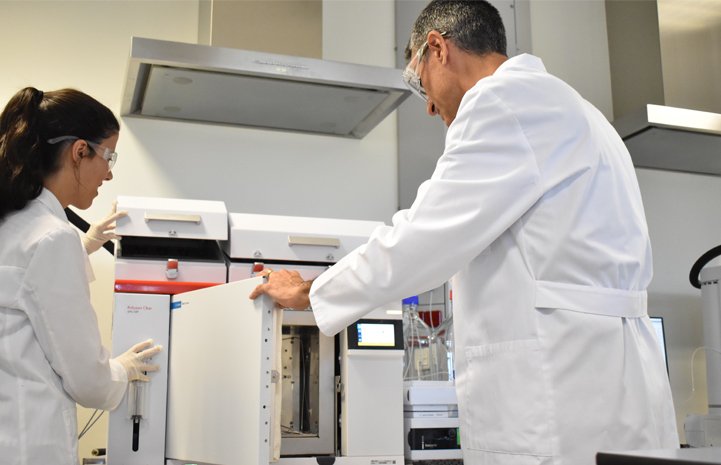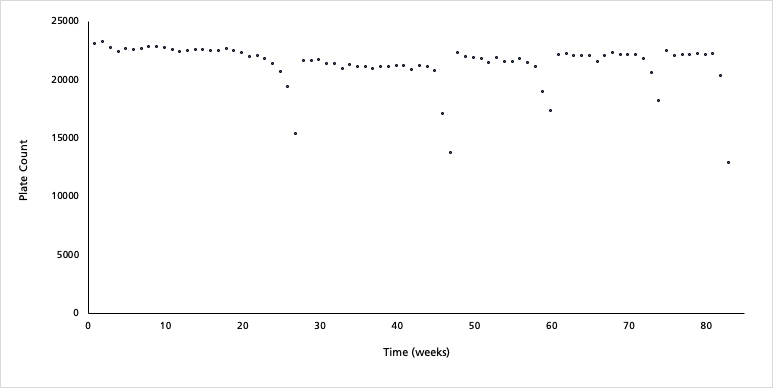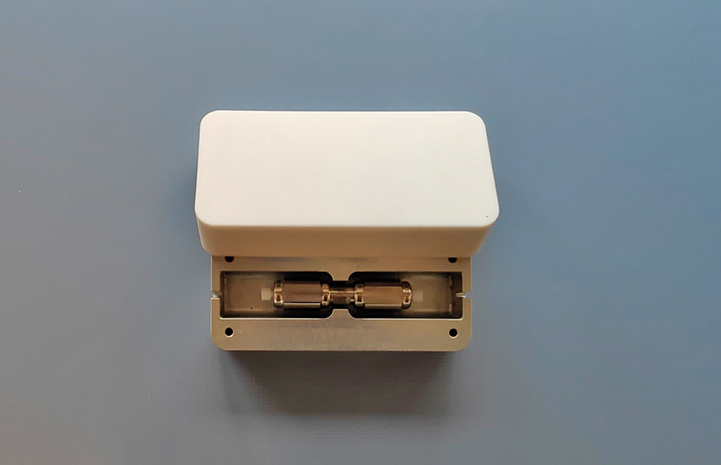How we make our GPC/SEC columns last longer (almost 2 years)
- May, 4 2020
- Category: GPC/SEC

As analysts in the Gel Permeation Chromatography (GPC) field, we know that picking the right columns and developing a stable analysis method is essential to delivering precise and accurate results. Even the most comprehensive analytical system will fail to provide the quality of data required if the columns perform a poor separation or if the analytical process is not stable.
GPC columns are at the core of GPC systems, which can be problematic due to their:
- short lifespan
- extreme sensitivity to changes in analytical conditions
- high cost
This drives us, analysts, to take extra precautions to preserve their properties for as long as possible.
At Polymer Char, we ensure the implementation of strict guidelines to protect our GPC columns, which include:
- ensuring mobile-phase quality (filtration, control of water and acid levels, etc.)
- removing inorganic particles or gels from the polymer solution prior to injection
- using the minimum injection volume and sample concentration possible
- keeping a proper flow-rate and system-pressure according to the column manufacturer’s recommendations
- keeping the analytical columns undisturbed and at a constant temperature for their entire lifespan (made possible by the dedicated column oven in Polymer Char’s GPC-IR® system).
In addition to these measures, for the past 5 years, we have also been using guard columns and analyzing their effect on GPC column longevity.
What is a guard column?
A guard column is a shorter and less expensive version of the analytical column. The guard column is placed before the analytical columns to protect them from particulate matter and highly retained sample components. This is especially useful when working with unknown polymer samples, which may contain reactive or adsorbable materials.
The low dead-volume design of guard columns minimizes peak chromatographic dispersion and asymmetries to maintain efficiency and resolution.
It is advisable that the guard column is packed with the same high-quality gels, of the same particle-size, and of the same inner diameter as the analytical columns so as not to alter the chromatography and ensure a smooth calibration curve.
How do we check the guard column’s performance? And, most importantly, how do we know when it is time to replace it?
As with analytical columns, guard columns should be changed when performance control measures, such as plate count and resolution, decrease. These parameters are easily evaluated thanks to the instrument´s data processing software, which acts as an interface between the analyst and the GPC system.

The above graph shows how, by using a guard column that was replaced every 2 months, we achieved almost 2 years of uninterrupted use of a set of analytical GPC columns.
As a leading polyolefin characterization laboratory, our GPC-IR® instruments operate 24/7 analyzing all kinds of polyolefin materials (including PP and high-molar mass HDPE) from many different customers. By adding a guard column, we were able to extend the life of our GPC columns from 6 to 24 months without compromising chromatographic performance.
But we didn’t stop there
Just like analytical columns, guard columns are very sensitive to changes in temperature so, ideally, they would be stored in the GPC-IR®’s main oven, along with the analytical columns. The problem with doing so is that every time a guard column would need to be replaced, the analytical columns would have to be cooled down as well, which is far from ideal.
This is why we always place the guard column in the GPC-IR®’s injection and filtration oven (auxiliary oven), so the analytical columns can remain undisturbed in the main oven until they need to be replaced. By using the main oven exclusively for analytical columns, we maintain the column-care principle that is one of the main advantages of GPC-IR®.
The auxiliary oven also houses other components and has to be cooled down every time one of those components needs replacing so, the next question that comes to mind is: how can we protect the guard column from these temperature changes?
The Guard Column Protective Case
Our R&D team set out to solve this problem and developed a dedicated case for the guard column that could be installed in the auxiliary oven and insulate it from sudden temperature drops.
The main advantages of this new hardware component and its location are:
1. It protects the guard column from big changes in temperature when other maintenance tasks are performed in the auxiliary oven, such as replacement of the in-line filter, or the valves’ rotor seals.
2. It keeps the guard column more accessible and easily replaceable, so the GPC system is back in operation in a few minutes instead of hours.

Polymer Char’s Guard Column Protective Case
Polymer Char’s high-temperature GPC-IR® now comes with this new configuration, but it is very easy to install a guard column and its protective case in older GPC-IR® instruments. If you wish to do so, please send us an email to info@polymerchar.com and we will get in contact with you.
Conclusion
Although, in general terms, GPC columns are expected to be less stable compared to other hardware components, their lifespan can be extended if handled carefully, and with the use and regular exchange of guard columns.
The guard column has proven to be a key component in any GPC system, and the Guard Column Protective Case has been designed to make the most of this critical, yet sometimes forgotten component, helping analysts in our daily job.
Having installed Guard Column Protective Cases in all our GPC systems, we can now study their impact on the guard columns’ lifespan. We will post our results, so don’t forget to subscribe to our newsletter if you are interested in learning more about this and other related topics.
1 Comment
Very well written. Thanks!